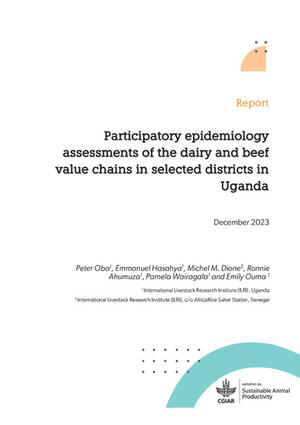
The sero‐epidemiology of Coxiella burnetii (Q fever) across livestock species and herding contexts in Laikipia County, Kenya
Abstract
Coxiella burnetii, the causative agent of Query fever (Q fever), is among the most highly infectious zoonotic pathogens transmitted among livestock, with chronic effects challenging to veterinary and medical detection and care systems. Transmission among domestic livestock species can vary regionally due to herd management practices that determine which livestock species are raised, whether or not livestock are in contact with wildlife, and the susceptibility of these livestock to infection. To explore how different livestock management practices are associated with the risk of infection in multispecies environments, we carried out a comparative study of three types of herd management systems in the central Kenyan county of Laikipia: agro‐commercial, mixed conservancy/commercial, and smallholder ranches. We tested C. burnetii antibody seroprevalence in four common livestock species. Across all management types, the highest seroprevalence was in camels (20%), followed by goats (18%), sheep (13%), and cattle (6%). We observed a lower odds of testing seropositive for young compared to adult animals (adjusted OR = 0.44 [95% CI 0.24, 0.76]), and for males compared to females (adjusted OR = 0.52 [95% CI 0.33, 0.80]). Animals from mixed conservancy/commercial and smallholder operations had a higher odds of testing seropositive compared to animals from agro‐commercial ranches (adjusted OR = 5.17 [95% CI 2.71, 10.44] and adjusted OR = 2.21 [95% CI 1.17, 4.43] respectively). These data suggest that herd management practices might affect the transmission dynamics of C. burnetiiin arid African ecosystems like those seen in Kenya where several transmission modes are possible, risk of drought has promoted new livestock species such as camels, and multiple wildlife species may co‐occur with livestock on the landscape. Further longitudinal studies are needed to disentangle the mechanisms underlying these patterns, and further explore transmission patterns between wildlife, domestic animal, and human populations.
Citation
Larson, P.S., Espira, L., Grabow, C., Wang, C.A., Muloi, D., Browne, A.S., Deem, S.L., Fevre, E.M., Foufopoulos, J., Hardin, R. and Eisenberg, J.N.S. 2019. The sero‐epidemiology of Coxiella burnetii (Q fever) across livestock species and herding contexts in Laikipia County, Kenya. Zoonoses and Public Health 66(3): 316–324.










